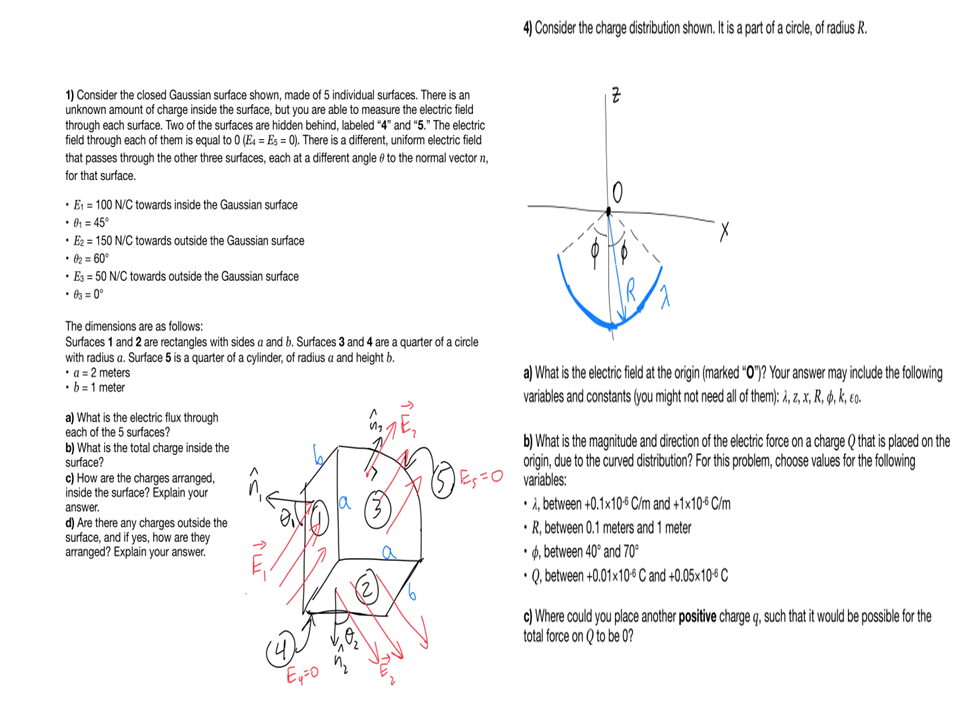Home /
Expert Answers /
Physics /
4-consider-the-charge-distribution-shown-it-is-a-part-of-a-circle-of-radius-r-z-1-conside-pa780
(Solved): 4) Consider the charge distribution shown. It is a part of a circle, of radius R. Z 1) Conside ...
4) Consider the charge distribution shown. It is a part of a circle, of radius R. Z ? 1) Consider the closed Gaussian surface shown, made of 5 individual surfaces. There is an unknown amount of charge inside the surface, but you are able to measure the electric field through each surface. Two of the surfaces are hidden behind, labeled "4" and "5." The electric field through each of them is equal to 0 (Ex = Es = 0). There is a different, uniform electric field that passes through the other three surfaces, each at a different angle 8 to the normal vector n, for that surface. • E1 = 100 N/C towards inside the Gaussian surface . 01 = 45 • E2 = 150 NC towards outside the Gaussian surface • 2 = 60° . Es = 50 N/C towards outside the Gaussian surface 03 = 0 0 ? îus The dimensions are as follows: Surfaces 1 and 2 are rectangles with sides a and b. Surfaces 3 and 4 are a quarter of a circle with radius a. Surface 5 is a quarter of a cylinder, of radius a and height b. . a = 2 meters a) What is the electric field at the origin (marked "O")? Your answer may include the following b = 1 meter variables and constants (you might not need all of them): 1, 2, x, R, 6, k, €0. a) What is the electric flux through each of the 5 surfaces? b) What is the total charge inside the b) What is the magnitude and direction of the electric force on a charge Q that is placed on the surface? origin, due to the curved distribution? For this problem, choose values for the following c) How are the charges arranged, 8 Est Esso variables: inside the surface? Explain your answer. •, between +0.1x106 C/m and +1x10-6 Cm d) Are there any charges outside the surface, and if yes, how are they • R, between 0.1 meters and 1 meter arranged? Explain your answer. • ¢, between 40° and 70° • 0, between +0.01x106C and +0.05x106C ?_ c) Where could you place another positive charge q, such that it would be possible for the total force on Q to be 0? (?? Eu=0 0 h
